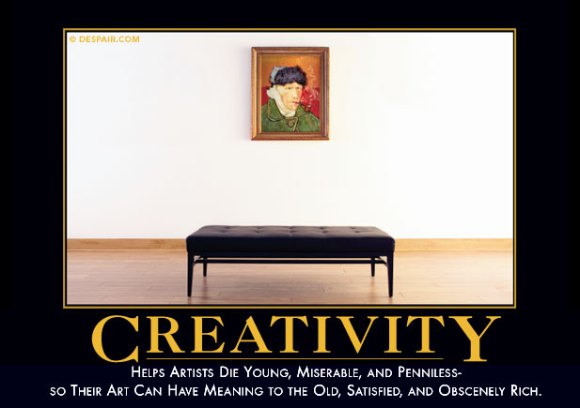Here is Tom Hardy, who plays Bane in The Dark Knight Rises:
I had no idea that I knew the actor from Inception and Warrior. Yes, there’s the new bulk, the shaved head, and the costume. But mostly, I didn’t recognize him because of the headgear. And the mask has raised the ire of two of my favorite movie critics. Anthony Lane writes in the New Yorker that “Bane wears a crablike mask over the lower part of his face—a disastrous burden for Tom Hardy, whose mouth, sensual and amused for such a tough customer, is his defining feature. Via this device, Bane declaims his bold, anarchic sentiments; at least, I think they were anarchic. Given that I could make out barely a third of them, he may well have been reciting from ‘Clifford the Small Red Puppy.’
And in Slate Dana Stevens laments “the film’s disappointingly uncomplex villain, the bald, hulking, pitiless arch-terrorist Bane, as played by Tom Hardy.” She continues:
Hardy obviously put an enormous amount of work into preparing for the role, bulking up his body and developing a strange, swooping voice that promises to give rise to a thousand late-summer Bane impersonations. But the choice to clamp a leather-and-metal mask over 60 percent of Hardy’s face for the entire movie means that, for all practical purposes, the actor’s diligent iron-pumping was in vain. Since we can’t tell whether the person producing that sound actually resides in that body or not, Nolan might as well have cast an already-huge body double and just had Hardy dub in the voice. Most of all, though, the mask is a mistake because we never get a good look at Bane’s face. With nothing to work with but a pair of darting eyes, Hardy can’t endow Bane with motivation enough to make him more than a generic bogeyman.
Of course. It makes sense. And yet, I can’t help but think that Bane’s mask makes a perfect visual and symbolic foil to Batman’s cowl—and scowl. This blog entry’s opening image, one of the most common promo shots, depicts the contrast and symmetry perfectly: Bane’s face is a kind of negative, a reverse mirror image, of Batman’s; what is exposed on Batman—the mouth, the jaw, the chin—is concealed on Bane. Batman’s head and eyes are disguised, whereas Bane’s are open. Batman’s guttural voice is an affectation; Bane’s is the real result—in a major revision of the comicbook character—of the mask he cannot remove without dying. When we first meet Bane at the beginning of the movie, he is hooded, but removing one mask only reveals another. Covering the mouth, even more than the eyes as the source of his humanity, forces Hardy to act entirely kinesthetically; together with Batman’s costume and mask covering 95% of his own body, the choreographed fight scenes, seemingly graphic, instead become a version of Japanese Noh drama, where the masks themselves embody the characters’ distinctiveness and personalities, freeing the actors to use their bodies, rather than their faces, as their sole vehicles of expression. When Bane finally breaks Batman, his final humiliation is removing Batman’s mask. In doing so, he does not reveal Batman’s true identity—he takes it from him.
All of the faces of the Dark Knight movies have been masks. The face of Harvey Dent—Two Face—is crucial to the new film, in that Gotham is presented only with his good side, his dark side hidden, an omission that Commissioner Gordon and Batman consider a necessary fiction but one that inevitably is revealed. Two Face is like Bane, a reversal of Batman’s face, but divided exactly vertically rather than horizontally. His perfect split represents both his fractured psyche and his Manichaeism, a division that proves unstable within himself as well as Gotham.
Bane’s mask-in-a-mask revelation was also used to introduce Heath Ledger’s Joker in the previous movie—one clown mask removed to reveal another beneath it. But unlike Batman, even unlike Bane, who gets a few seconds of backstory revealed in the end, the Joker has no secret face, and no secrets. His mask is his face and his face is his mask; he is exactly as he appears to be as well as a complete walking fiction. He is his own shadow, his own mask.
And what I thought from the advance images to be Catwoman’s mask turned out to be her goggles flipped up onto her head, the only whimsical, lighthearted mask in the film. Cat suit and cat burglar aside, Selina Kyle of Dark Knight Rises is not the comic’s Catwoman at all, not even in name, as “Catwoman” is never said. She wears a the thief’s domino mask seemingly to hide her self, but we discover that the one thing she truly desires is to be free of her identity, not to protect it at all.
But what lies behind Christopher Nolan’s mask? What is his political ambition? His artistic aspiration for the films seem clear enough: big sound and bigger spectacle. But Batman himself, like the Riddler, remains an enigma: a hero and an anti-hero; a cautionary tale of unchecked, out of control ego—Super Ego!—but also the need for order; the 1% given everything but also the self-made man; a right-wing borderline fascist or a left-wing critique of same. The film blows up Gotham City, looking more like New York than Chicago this time around, continuing the previous film’s imagery of 9/11. Police officers are trapped beneath rubble; we see a geographically vague Middle East and detention centers. The film seems to reference the War on Terror, Occupy Wall Street, the language of homegrown class warfare and New World Order conspiracy, symbolic pits with real walls to be scaled, the French Revolution, Kafka-esque (or Lewis Carroll-esque?) courts, a Fight Club-like Project Mayhem no longer content to blow up empty buildings, and a genuine allusion to Dickens’ A Tale of Two Cities. But what does any of it mean?
Now that Lucius Fox has granted Batman “The Bat,” a great chiropteran hovercraft, we finally have a way to begin grasping the Dark Knight trilogy’s political import: it is a series of what Claude Lévi-Strauss coined “floating signifiers,” and what Roland Barthes amended to a “floating chain of signifieds”—that is, like a mask itself, it means exactly, and only, what people see in it, whether everything, or nothing. And now, in the aftermath of the July 20 Aurora, Colorado, mass murder, the cinematic gunfire, mayhem, bloodshed, and masks (shooter James Holmes wore a gas mask during the massacre and had a Batman mask in his house when police searched it) inevitably take on darker new meanings.
Unfair? Of course. But Nolan’s brand of sustained ambiguity, something I am usually so quick to celebrate, has its own dark side.
Here’s William Butler Yeats’s poem, “The Mask”:
Put off that mask of burning gold
With emerald eyes.”
“O no, my dear, you make so bold
To find if hearts be wild and wise,
And yet not cold.”
“I would but find what’s there to find,
Love or deceit.”
“It was the mask engaged your mind,
And after set your heart to beat,
Not what’s behind.”
“But lest you are my enemy,
I must enquire.”
“O no, my dear, let all that be;
What matter, so there is but fire
In you, in me?”
Like Dark Knight Rises, it too is an exercise in sustained ambiguity, in the challenge of determining desire or deceit, who is a lover or an enemy, and what is or isn’t behind the mask. It seems to mean a lot of things, or, if poetry isn’t your thing, nothing. Yet one meaning that I take from it is the notion that we need to stop worrying about what’s behind each of our masks—that the face we put forward is our real face, even when it is just a mask. It sounds nihilistic, like the Joker. But it’s also, in many ways, all we really have. So perhaps Nolan’s sound and spectacle are all there is.
And they’re enough.
Time: 90 minutes. I knew this was going to be a long one before I started.




















